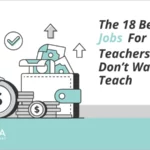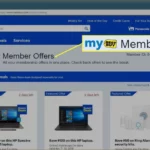Understanding the different ways in which individuals learn is crucial for teachers to create effective lesson plans that cater to the unique needs of each student. Every student absorbs, processes, comprehends, and retains information in a preferential way, which is why identifying and utilizing different learning styles is essential for academic success. This article will explore the different types of teaching that can accommodate various learning styles and offer tips for adapting teaching styles and strategies to cater to visual, auditory, and kinesthetic learners. By understanding and implementing these teaching methods, educators can create a dynamic and inclusive learning environment that fosters growth and academic achievement.
Contents
- Understanding Learning Styles
- Types of Teaching
- Adapting Teaching Styles
- Teaching Strategies for Different Learning Styles
- Assessing Learning Styles
- Conclusion
-
Frequently Asked Questions
- 1. How can I identify my learning style?
- 2. What is the best teaching method for auditory learners?
- 3. What teaching strategies work best for visual learners?
- 4. How can I adapt my teaching style for kinesthetic learners?
- 5. What are the advantages of experiential learning?
- 6. How can I assess my students’ learning styles?
- 7. What is the role of collaboration in teaching?
- 8. What are the benefits of adapting teaching styles?
- 9. How can I make my lectures more engaging for students?
- 10. What are some teaching strategies for students with different learning styles?
- References
Understanding Learning Styles

Understanding learning styles is crucial for teachers to create effective lesson plans that cater to the diverse needs of their students. As explained by Teach.com, “an individual’s learning style refers to the preferential way in which the student absorbs, processes, comprehends and retains information.” There are different types of learners, including visual, auditory, and kinesthetic learners, each with their own unique way of absorbing information. Teachers who understand the characteristics of different learning styles can use a variety of teaching strategies, such as lecturing, demonstrating, collaborating, and experiential learning, to engage their students and help them succeed. Adapting teaching styles and strategies for different types of learners is essential for promoting a positive learning experience.
Visual Learners
Visual learners absorb information best when it is presented to them in a visual way. These learners tend to prefer images, diagrams, charts, and videos. Visual aids such as posters, infographics, and graphic organizers help visual learners to organize and retain information. Teachers can use these tools to their advantage by incorporating them into their lesson plans. They can also use slideshows or PowerPoints to present information in a visual way. Teachers can also make use of the board to illustrate concepts and write down important notes.
Visual learners also tend to be good at spatial awareness and navigation. They enjoy maps, charts, and diagrams that help them understand how things relate to each other in space. They also enjoy puzzles and other activities that require spatial reasoning. For example, teachers can incorporate different kinds of maps into their lessons to help visual learners understand geography or history. They can also make use of games that involve spatial reasoning such as puzzles or mazes.
To engage visual learners, teachers can provide them with opportunities to create visual aids themselves. For example, students can be asked to create posters, infographics, or diagrams to explain a concept or idea. This will not only help visual learners to understand the material better, but it will also provide an opportunity for kinesthetic learners to engage with the material by creating something with their hands.
Teachers can help visual learners to succeed by incorporating visual aids into their lessons, using maps and diagrams to illustrate concepts, and providing opportunities for students to create their own visual aids. By doing so, teachers can ensure that visual learners are able to engage with the material and achieve their full potential.
Auditory Learners
Auditory learners learn best by listening to information rather than reading or seeing it. They tend to be good listeners and can easily grasp information through lectures, discussions, and oral presentations. They are also good at remembering information that they’ve heard. Auditory learners often enjoy music and may be skilled at playing musical instruments. They respond well to verbal praise and enjoy having conversations with others.
Teaching strategies for auditory learners include incorporating verbal explanations, discussions, and lectures into lessons. Teachers can also use podcasts, audiobooks, and videos with sound to engage these learners. Classroom discussions and oral presentations can also help auditory learners to process information more effectively. Teachers can adapt their teaching style for auditory learners by providing them with verbal instructions and allowing them to have discussions with their peers.
Assessing learning styles in auditory learners can be done by observing them during discussions and lectures. Teachers can also ask them to summarize information verbally or record themselves explaining a concept.
Understanding the different learning styles and adapting teaching strategies accordingly can help all students succeed. Teachers can use a variety of teaching methods to engage auditory learners and provide them with the support they need to excel in the classroom.
Kinesthetic Learners
Kinesthetic learners are those who learn best through hands-on experience. This means that they need to manipulate or touch material to learn effectively. Kinesthetic learners often struggle in traditional classroom settings where they are required to sit still for long periods of time. They prefer to move around, touch things, and engage in physical activities. These learners often excel in sports, dance, and other physical activities. Teachers can identify kinesthetic learners by observing their behavior in the classroom. They may be fidgety, have difficulty sitting still, or appear distracted. To engage kinesthetic learners, teachers can use a variety of strategies, such as incorporating movement into lessons, providing hands-on activities, and using manipulatives. These learners benefit from activities that require them to build or create something, such as building a model or creating a map. Teachers can also allow kinesthetic learners to work in groups and engage in collaborative activities that involve movement. By adapting their teaching strategies to meet the needs of kinesthetic learners, teachers can help these students reach their full potential.
Types of Teaching

When it comes to teaching, there are different types of approaches that can be used to deliver content to students. These include lecturing, demonstrating, collaborating, and experiential learning. Each of these methods has its pros and cons, and teachers may choose to mix and match based on the situation. For instance, some students may prefer hands-on activities, while others may do better with lectures or group work. By using different teaching styles, teachers can better engage their students and help them absorb the material.
Lecturing
is a teaching method that involves the instructor presenting information to a large group of students. This method is often used in college courses and other higher education settings. Lectures can be delivered in person or online, and can be supplemented with visual aids like slides, diagrams, and videos.
While some students may find lectures engaging and informative, others may struggle to stay focused during long periods of listening. To make lectures more effective for a wider range of learners, instructors can incorporate interactive elements such as polls, questions, and discussions. This can help keep students engaged and encourage them to ask questions and participate in the learning process.
One potential drawback of lecturing is that it can be a passive form of learning. Students may struggle to retain information if they are not actively engaging with the material. To address this issue, instructors can use active learning techniques such as group work, case studies, and problem-solving activities to help students apply the information they have learned.
Lecturing can be an effective teaching method when used in conjunction with other teaching strategies. Instructors should be mindful of different learning styles and strive to create engaging and interactive lectures that appeal to a wide range of students.
Internal link: If you’re a teacher looking for resources to supplement your lecture materials, check out ABC Mouse Teacher for interactive educational activities for young learners.
Demonstrating
is a teaching technique that allows students to see the material in action. This approach is suitable for visual and kinesthetic learners who learn best by seeing and doing. Demonstrating can be effective in teaching a new skill, such as a science experiment or a math problem. It involves showing students how to perform the skill step-by-step and then allowing them to practice on their own. This approach can be particularly useful in subjects like art and music, where visual and hands-on learning is essential.
To make demonstrating effective, teachers should break down the process into small steps and make sure students understand each step before moving on. They should also provide clear explanations and use visual aids, such as diagrams, pictures, and videos to supplement their demonstration. Additionally, teachers should encourage students to ask questions and provide feedback during the demonstration to ensure they understand the material.
Incorporating group work and peer-to-peer teaching can also be beneficial when using the demonstrating approach. This allows students to learn from each other and practice the skill together. Overall, demonstrating is a powerful teaching technique that can help students understand complex concepts and skills by seeing them in action.
Internal link: For more teaching techniques that cater to different learning styles, check out our article on Teaching Strategies for Different Learning Styles.
Collaborating
is a teaching style that emphasizes working together in groups. This approach can be particularly effective for kinesthetic learners, who often learn best through hands-on activities and movement. Collaborative learning can involve a range of activities, from brainstorming sessions to group projects to role-playing exercises. When students work together, they can share their ideas and perspectives, which can lead to a deeper understanding of the material. Collaborating can help students develop important social skills, such as communication, teamwork, and problem-solving. However, it is important to note that not all students may be comfortable working in groups, and some may need additional support to participate effectively. To ensure that all students benefit from collaborative learning, teachers can provide clear guidelines and expectations, monitor group dynamics, and provide individualized feedback as needed.
Experiential Learning
Experiential learning is a teaching style that emphasizes practical application over theoretical instruction. Students are given hands-on opportunities to learn by doing, rather than simply reading about or watching a process. This approach can be particularly effective for kinesthetic learners who benefit from physical engagement with the material. It can also be useful for visual and auditory learners who can observe and listen to the process as it unfolds.
Examples of experiential learning activities include:
- Field trips to relevant locations, such as museums, historical sites, or factories
- Simulations that recreate real-world scenarios, such as mock trials or disaster response exercises
- Role-playing exercises that allow students to take on different character perspectives and problem-solve collaboratively
- Service learning opportunities that allow students to apply classroom knowledge to real-world problems, such as volunteering at a food bank or animal shelter
While experiential learning can be a valuable teaching technique, it’s important to note that it may not be appropriate for all subjects. Some topics, such as abstract concepts in mathematics or complex historical events, may be difficult to simulate in a hands-on way. Additionally, experiential learning may require more time or resources to execute than other teaching approaches. As with any teaching technique, it’s important to assess its effectiveness for the specific learning goals and student population.
Adapting Teaching Styles

Adapting teaching styles is crucial in ensuring that all students can absorb and retain information effectively. It’s important to understand that each student has a unique learning style, and it’s up to the teacher to adapt their teaching style to meet their students’ needs. Adapting teaching styles for visual learners may include incorporating videos, diagrams, and other visual aids into the lesson. For auditory learners, teachers can use lectures, discussions, and podcasts. For kinesthetic learners, hands-on activities, role-playing, and games can be beneficial. By catering to each student’s learning style, teachers can create a more inclusive and engaging classroom environment, which can lead to better academic performance and student satisfaction.
Visual Learners
Visual learners learn best when they can see information presented in front of them. They tend to benefit most from visual aids such as diagrams, images, and videos. They are able to quickly process information when it is presented in a visual format. This type of learner is often skilled at spatial awareness and has a strong sense of direction. They may also be able to recall information more easily when it is associated with a visual cue.
To engage visual learners, teachers should incorporate visual aids into their lessons, such as charts, graphs, and diagrams. They can also use videos or animations to help explain complex concepts. Color-coding information and using mind maps can also be helpful for visual learners. Additionally, teachers can encourage visual learners to create their own visual aids, such as drawing diagrams or creating posters.
It is important to note that not all visual learners are the same. Some may prefer more abstract visuals, such as art or photographs, while others may benefit more from concrete images. Teachers should be aware of the diverse needs of visual learners and provide a variety of visual aids to cater to different preferences.
If you want to learn more about engaging visual learners, check out different kinds of maps that can be used to help students visualize geographic information.
Auditory Learners
Auditory learners prefer to learn through hearing. They tend to retain information better when it is presented to them through sound. These learners are good listeners and enjoy discussions, debates, and lectures. They may also enjoy music and have a good sense of rhythm. To cater to auditory learners, teachers can use strategies such as lectures, discussions, debates, and group activities that involve verbal communication.
Adapting Teaching Styles for Auditory Learners
Teachers can adapt their teaching styles to cater to auditory learners by incorporating more verbal communication into their lessons. For example, teachers can use podcasts or recordings to present information, and encourage students to listen to them repeatedly to reinforce their learning. Another strategy is to use group discussions to help auditory learners process information, by asking them to explain their understanding of a concept to others, or by encouraging them to ask questions and share their thoughts.
Teaching Strategies for Auditory Learners
Teachers can use a variety of strategies to help auditory learners thrive in the classroom. These may include:
– Providing verbal instructions and explanations
– Using podcasts or recordings to present information
– Encouraging students to participate in group discussions
– Using verbal repetition to reinforce learning
– Incorporating music or rhythm into lessons
– Providing opportunities for students to give oral presentations
Assessing Learning Styles
Teachers can assess their students’ learning styles by using a variety of methods, such as observation, interviews, and questionnaires. By understanding their students’ learning styles, teachers can adapt their teaching styles to cater to the needs of all learners.
Auditory learners thrive when they have the opportunity to learn through sound, verbal communication, and discussion. Teachers can use a variety of strategies to help these learners succeed, including verbal repetition, podcasts, and group discussions. By adapting their teaching styles to cater to all types of learners, teachers can create an inclusive and engaging learning environment for all students.
Kinesthetic Learners
Kinesthetic learners are those who learn best through hands-on activities and physical experiences. These learners tend to have a strong sense of body awareness and enjoy activities that involve movement. They often have trouble sitting still for long periods of time and may become restless or fidgety in traditional classroom settings.
To engage kinesthetic learners, teachers can incorporate a variety of activities into their lessons, such as role-playing, simulations, and hands-on experiments. For example, a science teacher might have students build a model of a cell or conduct a lab experiment to help kinesthetic learners understand the concepts being taught.
Teachers can use movement and physical activity as a way to reinforce learning. For example, a math teacher might have students use their bodies to demonstrate addition or subtraction problems, or a language arts teacher might have students act out a scene from a book they are reading.
Teaching strategies for kinesthetic learners can include using manipulatives, such as blocks or puzzles, to help them visualize concepts. Teachers can also allow kinesthetic learners to move around the classroom during lessons or take frequent breaks to stretch or exercise.
To assess whether a student is a kinesthetic learner, teachers can look for signs such as a preference for hands-on activities, difficulty sitting still, and a need for physical movement. Teachers can also observe how well a student retains information when it is presented through physical activities or experiences.
By understanding the unique needs of kinesthetic learners, teachers can adapt their teaching styles to better engage and support these learners in the classroom. Incorporating movement and hands-on activities can help kinesthetic learners thrive academically and develop a love of learning.
Teaching Strategies for Different Learning Styles

Teaching Strategies for Different Learning Styles: When it comes to teaching strategies for different learning styles, it’s important to cater to each individual’s needs. For visual learners, incorporating images, diagrams, and videos can help them better understand the material. For auditory learners, lectures and discussions can be effective. Kinesthetic learners benefit from hands-on activities and experiential learning. To adapt teaching styles, teachers can use a variety of methods, such as creating visual aids, providing opportunities for discussion and collaboration, and incorporating movement into lessons. Assessing learning styles can be done through observation, self-assessment, and learning style inventories. By using a combination of teaching strategies and assessing learning styles, teachers can create a more inclusive and engaging learning environment for their students.
Visual Learners
Visual learners are those who learn best when information is presented to them in visual form. These learners prefer to see information in the form of pictures, diagrams, charts, maps, videos, and other visual aids. They tend to have excellent spatial awareness and a good sense of direction, and they often use visual imagery to remember information. Visual learners are often good at reading and writing, and they prefer to learn through text-based materials that are well-organized and easy to follow.
To help visual learners understand new concepts, teachers can use a variety of teaching strategies. Some effective strategies for visual learners include using graphic organizers, using videos and animations, creating mind maps, and using visual aids such as diagrams, charts, and maps. Teachers can also use color-coding and highlighting to help visual learners focus on important information.
One way to engage visual learners is to use visual storytelling. Teachers can use storytelling to help students visualize complex concepts and make connections between different ideas. By using stories to teach, teachers can help visual learners make sense of the material and remember it more easily.
To assess visual learners, teachers can use a variety of methods, such as asking them to draw pictures or diagrams, create mind maps, or use other visual aids to demonstrate their understanding of the material. Teachers can also observe visual learners as they work on assignments or participate in class discussions to get a sense of how they process information.
Teachers can adapt their teaching styles to better meet the needs of visual learners by incorporating a variety of visual aids and strategies into their lessons. By doing so, they can help visual learners thrive and succeed in the classroom.
Auditory Learners
Auditory learners prefer to learn through hearing and listening, and this can be done in a variety of ways. They often have a good memory for things they hear, such as lectures or discussions, and can benefit from recordings and verbal explanations. In the classroom, they may enjoy participating in group discussions and debates where they can listen to different perspectives. They may also enjoy music and may find it helpful to learn through songs or rhymes. Teachers can use these preferences to their advantage by incorporating auditory learning strategies into their lessons.
Teaching Strategies:
- Provide verbal explanations and instructions
- Encourage participation in group discussions and debates
- Use recordings of lectures or discussions
- Integrate music and songs into lessons
- Provide opportunities for students to read aloud or record themselves reading
Adapting Teaching Styles:
Teachers can adapt their teaching styles to better suit auditory learners by focusing on lectures and discussions, and providing verbal explanations and instructions. They can also incorporate group work and debates into their lessons to allow auditory learners to engage with others and hear different perspectives. Teachers can also use technology to their advantage by recording lectures or discussions for students to listen to later.
Assessing Learning Styles:
To assess whether a student is an auditory learner, teachers can observe their behavior in the classroom. Auditory learners may enjoy participating in discussions and debates, and may perform well on assignments that involve listening and speaking. They may also enjoy music and be able to remember song lyrics easily.
Teachers should strive to incorporate auditory learning strategies into their lessons to cater to the needs of auditory learners. By doing so, they can help these students thrive and achieve success in the classroom.
Kinesthetic Learners
Kinesthetic learners are individuals who learn best through hands-on experiences and physical activities. These learners tend to have excellent motor skills and enjoy exploring the world through touch and movement. They are often referred to as “doers” or “tactile learners”. Kinesthetic learners learn by doing and prefer to be actively engaged in the learning process. They often have difficulty sitting still and listening for extended periods of time. Instead, they need to move around and engage with the material in a physical way.
To engage kinesthetic learners in the classroom, teachers should incorporate activities that allow them to move and interact with the material. This could include role-playing, simulations, and games. They may also benefit from hands-on projects and experiments. Kinesthetic learners respond well to physical demonstrations and examples, so teachers should provide plenty of opportunities for them to see and experience the concepts being taught.
It’s important for teachers to recognize and adapt to the needs of kinesthetic learners in the classroom. By providing activities that allow them to engage physically with the material, teachers can help these learners achieve academic success. Teachers should also encourage kinesthetic learners to use physical movement as a tool for learning, such as taking notes while standing or using hand gestures to help remember key concepts.
If you are a kinesthetic learner yourself, you may find it helpful to incorporate physical movement into your study routine. This could include taking breaks to go for a walk or engaging in physical activities while studying. By incorporating movement into your learning process, you can enhance your understanding and retention of the material.
Assessing Learning Styles
Assessing learning styles is crucial for teachers to create lesson plans that cater to the individual needs of their students. There are various methods to assess learning styles, including surveys, questionnaires, and classroom observations. Some popular surveys include the VARK questionnaire and the Learning Style Inventory. These surveys ask students a series of questions to identify their preferred learning style. Teachers can also observe their student’s behavior in the classroom to identify their dominant learning style. For example, a student who frequently takes notes may be a visual learner, while a student who enjoys hands-on activities may be a kinesthetic learner.
Once a teacher has identified the learning styles of their students, they can tailor their teaching methods to cater to those styles. For visual learners, teachers can use visual aids such as diagrams, videos, and infographics. Auditory learners may benefit from lectures, discussions, and podcasts. Kinesthetic learners can benefit from hands-on activities and demonstrations. By adapting their teaching styles to the learning styles of their students, teachers can facilitate a more engaging and effective learning experience.
Assessing learning styles is not a one-time process. As students grow and develop, their learning styles may change. Teachers should regularly assess their students’ learning styles to ensure that their lesson plans continue to meet the needs of their students. By creating a learning environment that accommodates different learning styles, teachers can help their students reach their full potential.
Conclusion
In conclusion, understanding and incorporating different learning styles into teaching is crucial for student success in the classroom. By identifying and adapting teaching styles to cater to the three main learning styles – visual, auditory, and kinesthetic – teachers can create a more inclusive and effective learning environment. The different types of teaching styles, such as lecturing, demonstrating, collaborating, and experiential learning, can be used to engage all types of learners. Adapting teaching styles to fit students’ needs is also important, as it helps to ensure that all students are able to comprehend and retain information. Teachers can use different teaching strategies, such as visual aids, interactive activities, and hands-on experiences, to cater to the different learning styles. Assessing learning styles through observation and student feedback can also help teachers to create a more tailored learning experience for their students. Ultimately, by incorporating different teaching styles and strategies, teachers can help students to reach their full potential and succeed in their education.
Frequently Asked Questions
1. How can I identify my learning style?
You can identify your learning style by taking a learning style assessment test or by reflecting on your preferred methods of learning.
2. What is the best teaching method for auditory learners?
Teaching methods that involve verbal lectures, discussions, and group activities are best for auditory learners.
3. What teaching strategies work best for visual learners?
Visual learners benefit from methods that involve diagrams, visual aids, and written instructions.
4. How can I adapt my teaching style for kinesthetic learners?
Teaching methods that involve hands-on activities, role-playing, and movement are best for kinesthetic learners.
5. What are the advantages of experiential learning?
Experiential learning allows students to apply their knowledge to real-world situations and helps them retain information better.
6. How can I assess my students’ learning styles?
You can assess your students’ learning styles by observing their behavior, asking them questions, and using learning style assessment tools.
7. What is the role of collaboration in teaching?
Collaboration helps students learn from each other, improves communication skills, and promotes critical thinking.
8. What are the benefits of adapting teaching styles?
Adapting teaching styles to different learning styles can improve student engagement, comprehension, and retention of information.
9. How can I make my lectures more engaging for students?
You can make your lectures more engaging by incorporating visual aids, interactive activities, and real-life examples.
10. What are some teaching strategies for students with different learning styles?
Teaching strategies for students with different learning styles include incorporating multimedia, providing hands-on activities, and allowing for group discussions.







